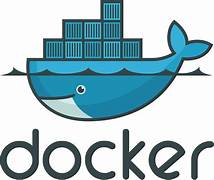Learn how to start the Docker daemon automatically with WSL2. Our Docker Support team is here to help you with your questions and concerns.
WSL2 Start Docker Daemon Automatically
WSL, short for Windows Subsystem for Linux helps integrate Linux with the Windows environment.
One of the key functions offered by WSL is Docker support.

Today, we will take a closer look at setting up Docker to run smoothly in the WSL environment.
Installing Docker on WSL
- First, open a terminal with administrative privileges and run this command:
wsl –install - Then, make sure the WSL distro is set to version 2 by running:
wsl -l -v - If any of the distros are still version 1, we need to upgrade them to version 2 using:
wsl --set-version distro_name 2
Interestingly, Docker in WSL2 is that the Docker service doesn’t start automatically. We can easily fix this with these steps:
- First, add these lines to the shell configuration file:
if [ -n "`service docker status | grep not`" ]; then
sudo /usr/sbin/service docker start
fi
- Then, save the changes, by directly editing the file in the WSL environment or by navigating to `/home/username` via File Explorer in Windows and editing the `.profile` file.
- Next, restart the terminal or WSL instance for the changes to take effect.
Now, we have to make sure that the Docker daemon starts automatically at boot time:
- Install Docker on WSL by running:
sudo apt update
sudo apt install docker.io -y
- Then, open the sudoers file for editing:
sudo visudo - Next, add the following line to the file to allow running Docker daemon without a password prompt:
user_name ALL=(ALL) NOPASSWD: /usr/bin/dockerd - Now, update the shell profile to automatically start the Docker daemon.
For example, add the following lines to ~/.zshrc or ~/.bashrc file:
# Start Docker daemon automatically when logging in if not running.
RUNNING=`ps aux | grep dockerd | grep -v grep`
if [ -z "$RUNNING" ]; then
sudo dockerd > /dev/null 2>&1 &
disown
fi
- Then, add the username to the Docker group to avoid using sudo for Docker commands:
sudo usermod -a -G docker $USER - Then, log out and log back in or open a new terminal for the changes to take effect.
[Need assistance with a different issue? Our team is available 24/7.]
Conclusion
In brief, our Support Experts demonstrated how to integrate Docker into your WSL environment. We also got a quick look at how to automate Docker service startup and daemon execution.
PREVENT YOUR SERVER FROM CRASHING!
Never again lose customers to poor server speed! Let us help you.
Our server experts will monitor & maintain your server 24/7 so that it remains lightning fast and secure.



Thank you for putting this together. Simplest and most complete guide for getting docker engine going on WSL 2.0!
Hi Eliot,
Thanks for the feedback. We are glad to know that our article was helpful for you 🙂 .